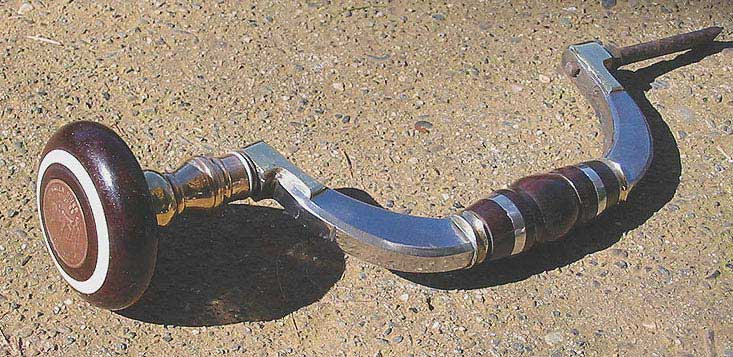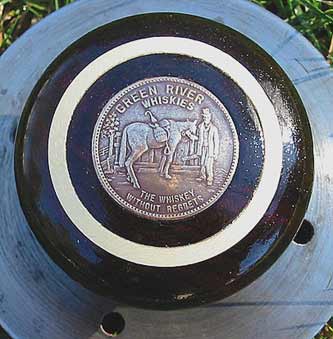 Presentation Brace/Toolbox Handle
Presentation Brace/Toolbox Handle
 Presentation Brace/Toolbox Handle
Presentation Brace/Toolbox Handle
|
I have this recurring dream. The dream is a traveling tool kit with the smallest cabinetmaker's tools in it that will still do a full sized job. I wanted a brace in the box but braces take up so much room that it really seemed better to keep it outside the box somehow. I got this idea that if the head could come off and a plain shank was clamped into the chuck I could clamp it into some brackets and it would become the carrying handle for the box itself. I don't expect to be needing a 16" swing brace for the work I'm planning with the "Cabinet Doctor's" box. Mostly it will be for drilling small holes and driving screws. So I made my brace with a 5' swing. This is actually nominal and 5" is an exaggeration, but it's more than 4 so...... This project started with nothing but an idea and rusty, crusty old boneyard scrap to work with. |
 The frame began it's life as a piece of 1/2" thick plate steel, a torch and a
plan. There were brass spindles and old lamp parts used. The brass plates
at the ends of the frame had to be pressed to shape being too thick to merely
bend by hand. This turned out to be a job for a hardwood punch n die outfit I
made up.
The frame began it's life as a piece of 1/2" thick plate steel, a torch and a
plan. There were brass spindles and old lamp parts used. The brass plates
at the ends of the frame had to be pressed to shape being too thick to merely
bend by hand. This turned out to be a job for a hardwood punch n die outfit I
made up.
| The rings are in the center
rosewood handle are pewter, cast in place, and they're fun to
make.
Here's how. Get comfortable.
|

| Here is a closeup of the brace
head. Being as the ultimatums use a struck coin medallion I thought it'd
be fun to have one too. I found this old trade token from the early
1900's. (If you owned a distillery, would you call -your product-
Green River Whiskey?)
Another simple punch and die was made up and lined with rubber this time ,to make sure not to damage the embossing, and the dome shape was gently pressed in using a steel benchvise as the press. The rosewood pad was turned on a faceplate first. Then the holly ring. You mount the inlay ring, in this case hollywood, to the faceplate with double stick tape and use a light touch and calipers often to size it just right. Then both parts must be sealed with several coats of shellac BEFORE trying to assemble them. If you don't, glue or any further finish will bleed the red rosewood color into the holly like you can't believe! Stop back at this page again sometime and I might have the pix of the toolbox brackets up. yours, Scott |